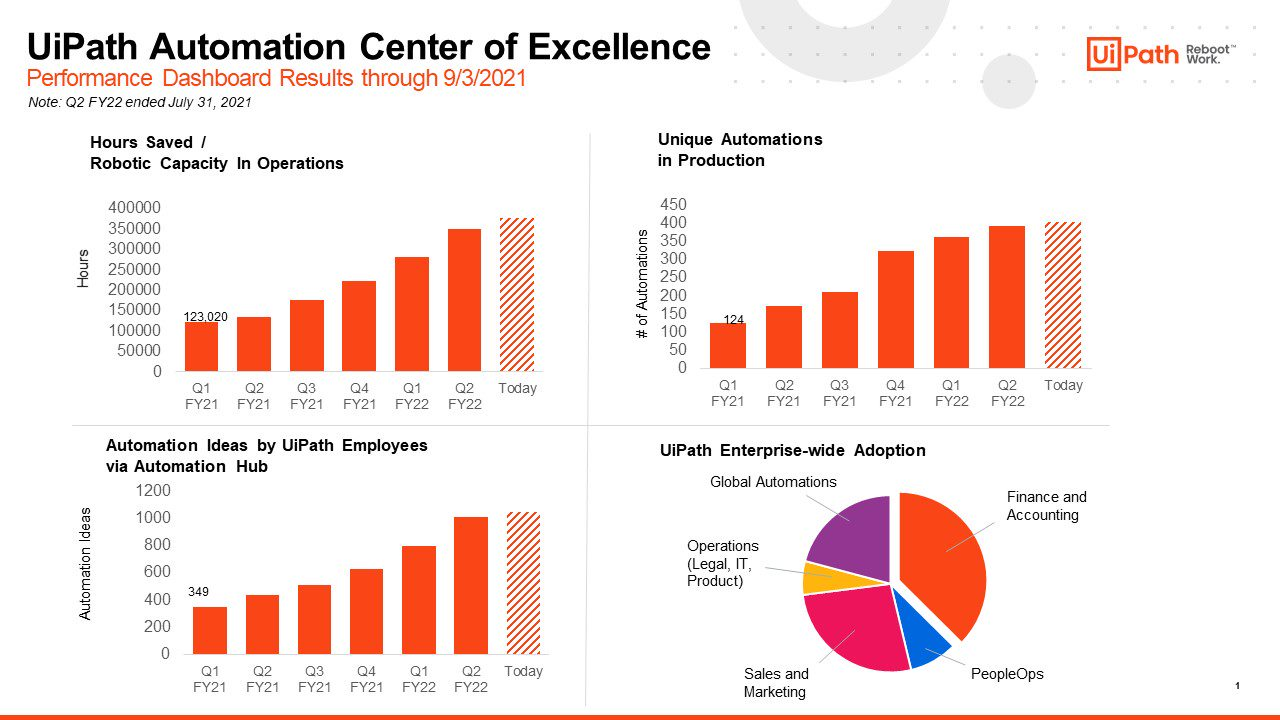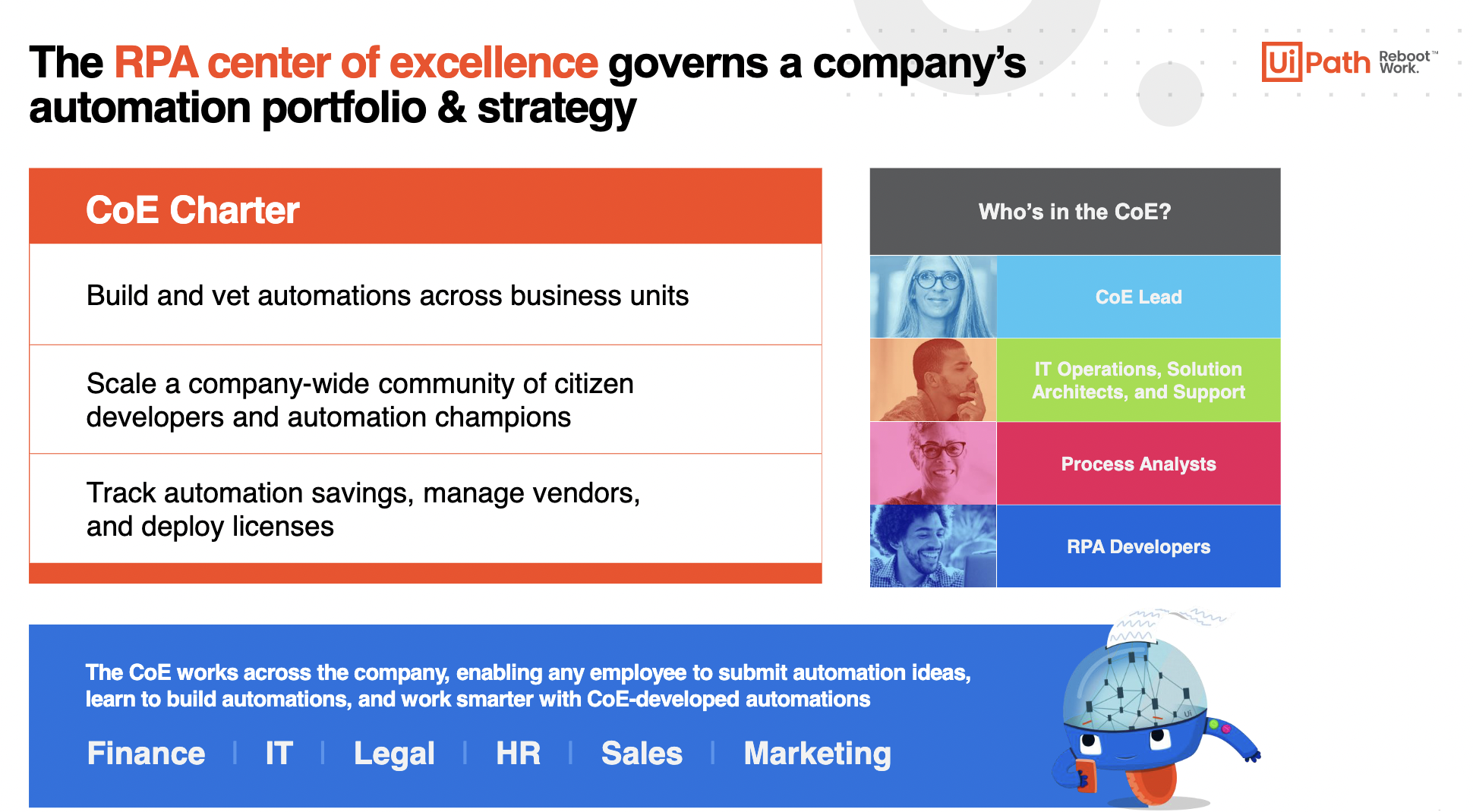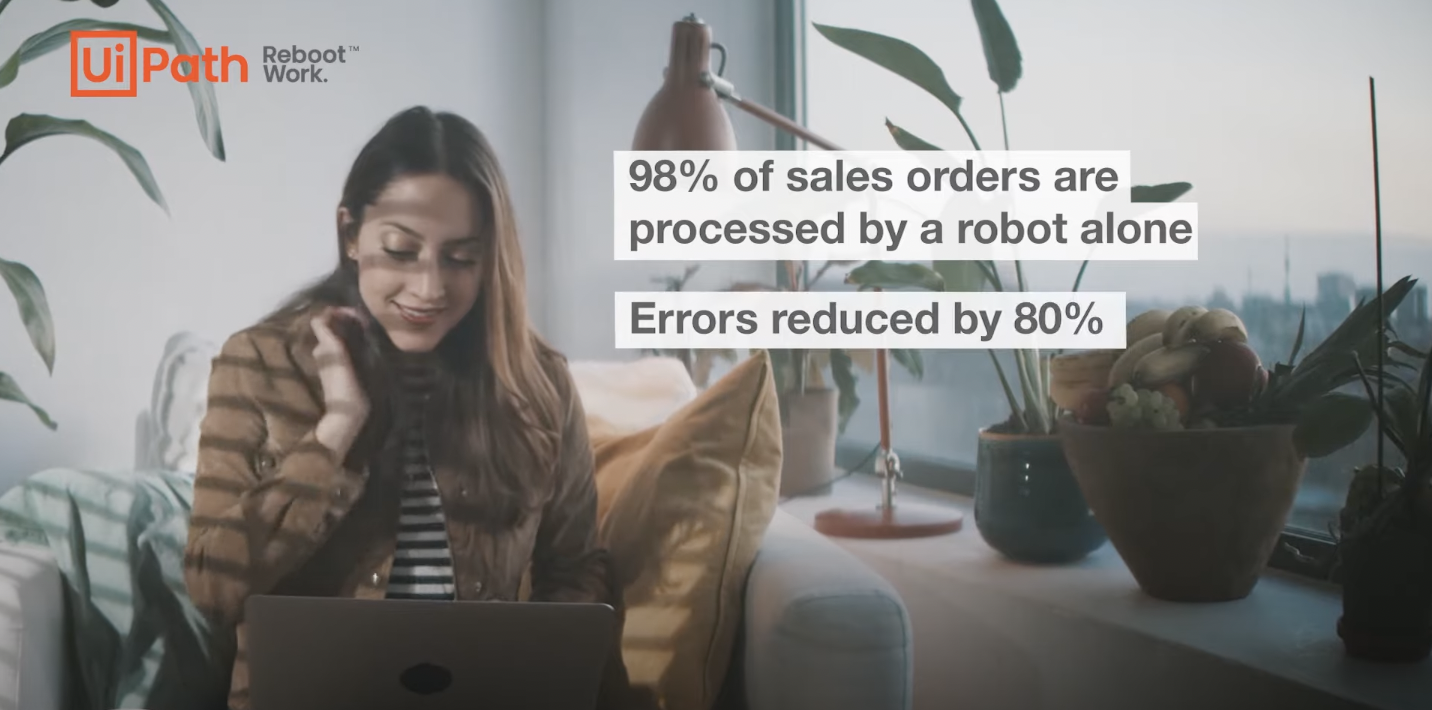We’re thrilled to share another update from our internal automation center of excellence (CoE).
In the second quarter (Q2) of fiscal year (FY) 2022, robots added 69,973 more hours of capacity for the company. That’s more than 376,482 total in the last several years, and an increase in capacity of 21.3% compared to Q1 (57,670 hours).

Every quarter, after our earnings announcement we update you on our internal automation program.
This quarter, we’re pleased to share:
Lessons learned from scaling a citizen developer program
Reflections on increasing business agility through automation
A brand-new encyclopedia of hundreds of automations
Citizen developers expand the “automation supply chain”
We need to start referring to automation delivery within an org not just as the ‘CoE’ but as an automation supply chain that includes professional automation developers in the CoE, citizen developers, business stakeholders, and partners. A basic rule of thumb for any supply chain or sourcing leader is to never sole-source on a single supplier because it creates bottlenecks and concentrated risk. If you have multiple vendors it gives you more leverage and protects you from risk exposure related to volume bottlenecks. The same goes for your automation program—we encourage diversification of your automation supply chain.
Sarah Parker, Senior Director, Customer Success, UiPath
With countless employees on our Product, Customer Success, Pre-sales, and Consulting teams regularly building their own automations, our company has always had a de-facto citizen developer program.
In other divisions numerous employees leverage UiPath StudioX for personal automations on their desktop, which the CoE governs.
We wanted to acknowledge and certify this latter group for their efforts, and in mid-June our first cohort of citizen developers graduated across the world.
Representing an expansive array of teams from Finance to Sales to IT to Marketing, they’re working on automating ideas that have surfaced across the company in our Automation Hub. These citizen developers extend the power of the full-time automation developers in our CoE.
Our newly-minted citizen developers are already hard at work expanding our automation supply chain across business lines.
Ian, an IT Support Manager on our IT team, built an automation that saves over 40 hours of manual work by generating projects in software that his team uses daily
Several citizen developers on the Finance team built new robots to help accelerate forecasting
Stere and Laura are speeding up the Procurement office’s requisition routine with robots
We’ll share more updates on their projects on this blog and at UiPath FORWARD IV during our “Automate like the UiPath CoE” session in the How-To Theater on October 5.
Agility through automation
Like many of you, we believe in an agile approach to RPA development, testing, and deployment.
This allows us to quickly evaluate new automation proposals and apply lessons learned in real time. The CoE works in two-week sprints that are bookended by demo sessions and retrospectives. This provides enough structure and feedback to ensure that we correctly prioritize and smoothly deploy each automation request.

But we also believe in an agile approach to our business writ-large.
The last few years have been a rollercoaster for the world.
Our one constant has been a reliance on robots.
Automation may have a reputation as a “stopgap” technology in the public discourse, but our experience shows a more-nuanced take is in order.
Sure, some automations bridge us through one-time system transitions; we used robots to help accelerate our transition from one marketing platform to another in the last year, for instance.
But are the robots that run our order to process daily merely a stopgap? Not to the Finance team that uses them to accelerate the process 97%.

Or what about the customer-experience-enhancing robots that aggregate feedback from the UiPath Forum and send it directly to the right product manager? For the customers who get faster response times and direct input on our roadmap that’s far more than a stopgap.
Stability through flexibility
The average business has more than 100 applications. And we have our fair share, too. I imagine your applications list has also evolved through the years. As new innovations emerge, it’s only natural for even “digital natives” to continuously evolve their software stack.
For us, the one constant among any change has been our own technology. Robots, perhaps paradoxically, provide stability through flexibility. We know that regardless of any potential system limitations of an application, we can extend its power through automation.
The last several years, automation has arguably done the impossible for us. In a world of ever-present uncertainty, automation is a salve for the anxious business mind. And sure, in an inherently uncertain world there’s only so much certainty that automation can bring. But to the extent that we wanted to be ready for whatever was around the corners of 2018-2021—be it pandemic, process refresh, system transition, or IPO—automation gave us a toolbox to respond with agility.
It’s a toolbox to respond to whatever’s next. And the great thing is that it’s available to any business.
Life is organic. It’s changing. It’s improvisational. You never know what’s next. Opportunity. Fortune. Heartbreak. One thing is certain: change.
How do you prepare? How do you meet the change where it is, and win? How do you emerge from change’s attempts on your business stronger than before?
Automation.
A literal encyclopedia of automations
In this spirit of agility, customers often ask for automation examples from processes we’ve implemented internally.
We created this encyclopedia of CoE automations for you to explore. Bookmark this link and we will continue adding processes every quarter.
We also invite you to join us for our Center of Excellence Summit, a multi-week webinar series. I’ll be part of panel presenting “UiPath Automating UiPath: Stories from our own CoE”. Even if you can’t attend, be sure to register to get on-demand access to the webinar recordings after the event.



